Index
Page 5 of 10
Features:
Intel P55
6+1-phase VRM
uPI semiconductors uP6218AM VRM controller cpu-portion
uPI semiconductors uP6212AG VRM controller northbridge-portion
2x Realtek RTL8111DL PCIe Gb LAN controller
JMicron JMB363 PCIe SATA II/PATA controller
Fintec F71889 super i/o controller
Realtek ALC889
ICS 9LRS4116AL clock generator, branded as MSI OC Genie
passive cooling of chipsets/VRM
32Mb BIOS, version: 1.2, 1.3beta, 1.4beta, 1.5beta5
Mainboard Revision: 1.0
Slots:
2x PCIe 2.0 x16 or 2x x8
1x PCIe 2.0 x4 @ x2 speed
2x PCIe 2.0 x1 @ x0.5 speed
2x PCI
Memory:
4x Dual-Channel DDR3-slots for PC3-10667U memory up to 16GB
Storage:
6-Port SATA II featuring RAID 0, 1, 5, 0+1, JBOD
1-Port PATA
1-Port SATA II
1-Port Floppy
Backpanel ports:
1x PS/2 keyboard
1x PS/2 mouse
2x Gb LAN
7x USB 2.0
1x eSATA II/USB combo port
1x Firewire port
7.1 analog audio
1x optical audio out
1x coaxial audio out

Accessories:
4x SATA cable angled with clips
1x 2-port USB 2.0 bracket
1x SLI bridge
1x Crossfire bridge
1x PATA cable
1x 2-port eSATA II bracket with eSATA cable
1x M-Connector
2x V-Check Cables
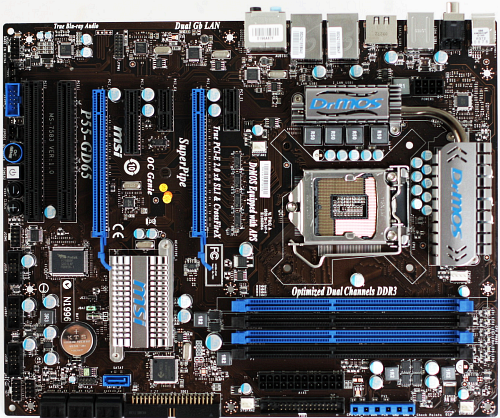
Layout:
This board is clearly targeting the higher end of the market. With tons of accessories expected in this price range, MSI does well. The only thing we don't like is the missing debug LED. We could have easily passed on the PATA, floppy ports and the super I/O controller,
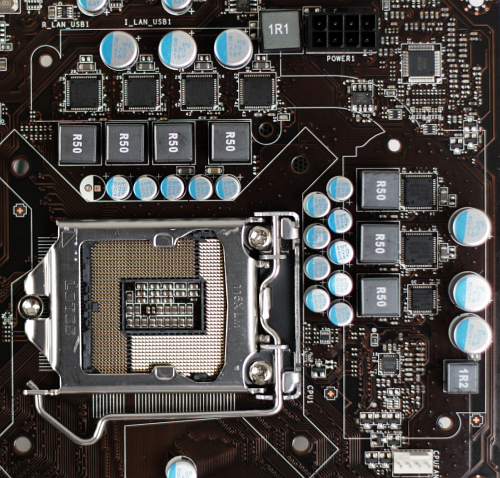
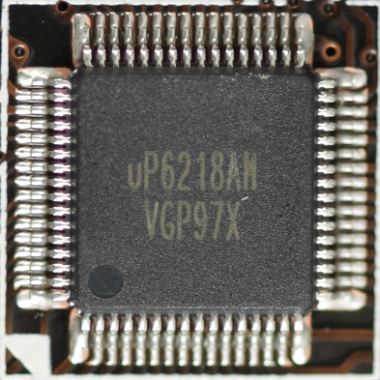
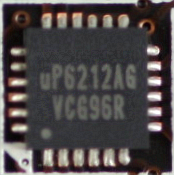
The VRM is an analog 6-phase design and as expected it features highly integrated low RDS-ON MOSfets. For some reason MSI is using uPI VRM controllers. It seems this company did impress MSI and we have nothing negative to report about this change. MSI is the leader concerning power-consumption. Even under load MSI shaves off some bucks of your power bill.
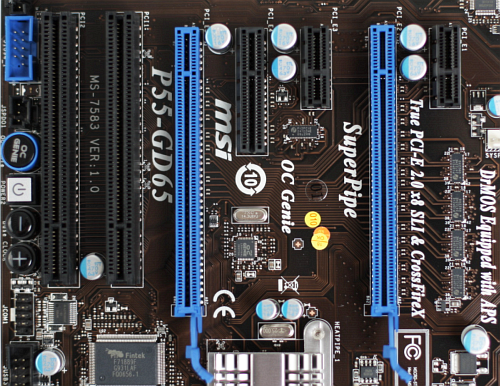
It features a typical MSI slot design, but the addition of one PCIe x1 slot before the first PCIe x16 slot. In constrast to the GD80 version, it's not blocked by an useless cooling solution.
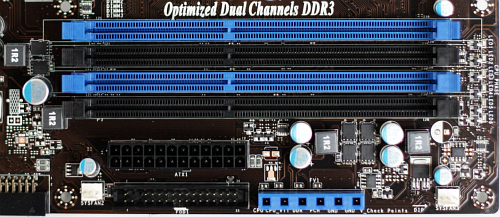
The memory slots are at a safe distance of the CPU socket. Below the memory you find the so-called "V-Check" which makes it possible to measure several voltages directly on the board, as long as you own a multimeter.
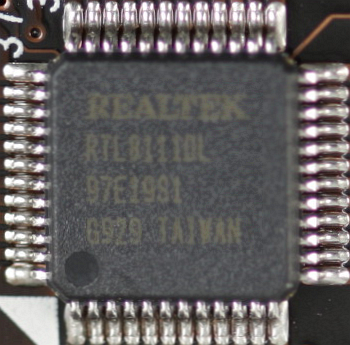

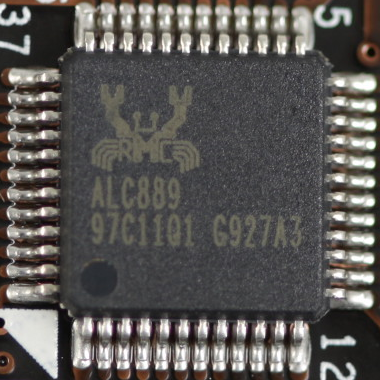
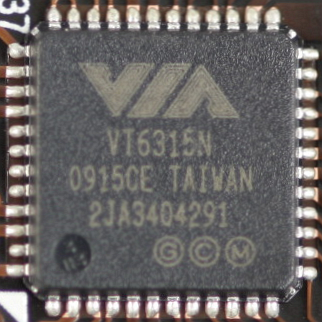
For some reason all vendors go for the cheapest PCIe Gb LAN solution on the market, which is the recently introduced Realtek RTL8111DL. Because this is a high end board we had expected something better. Also the JMB363 is quite standard, it supports one PATA, and two SATA ports. One SATA port is used one the backpanel, the other onboard. We think PATA ports are obsolete, so is the Floppy-port. The audio portion is provided by a standard Realtek codec, the latest ALC889. It's an improved version of the ALC888, but with higher signal-noise ratio and decoding capabilities for DTS and Dolby. At least MSI went the extra length and used a VIA PCIe Firewire controller.

The PATA and SATA connectors are on the edge of the board and all of them are angled at 90°. This is the best solution available because the connectors won't interfere with any cards.
BIOS:
MSI uses an AMI BIOS. Over the course of the last eight weeks we have worked with MSI to enhance the BIOS. For some reason the memory settings still lack auto settings, but MSI promised to fix it. The OC Genie features is maybe a nice feature for rookies but not the the real overclockers who know what they are doing. A chip should detect how much a CPU and memory can be overclocked, but the values don't seem right to us. The BIOS is upping the clock but disabling all energy features, which is not necessary and the speed-increase is just above the fastest turbo-mode. Also the OC Genie is exceeding Intel specs, the latest BIOS version is limiting the DRAM voltage at about 1.673V. We think, the user should decide if he wants to exceed Intel specs or not.
While MSI manages to clock on spot on AMD boards, they fail with Intel boards:
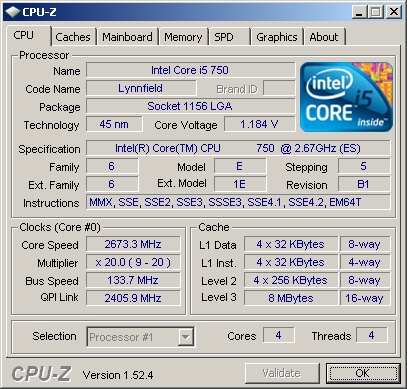
At its price level we expected 4GHz to run without problems, and it did with the lowest CPU temperatures of all boards:
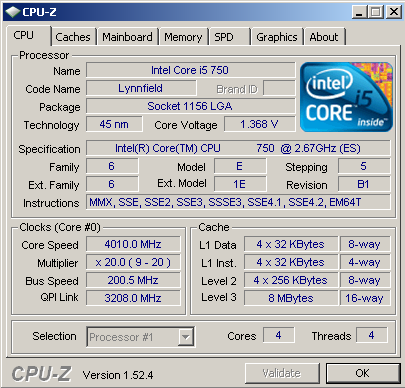
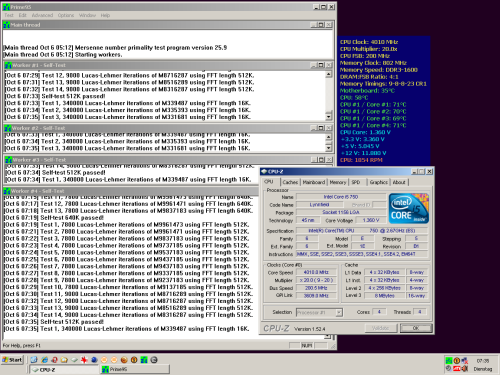
Of course undervoltaging is standard with MSI boards and it works with 1.00V with low vDroop or 1.03V with high vDroop.

